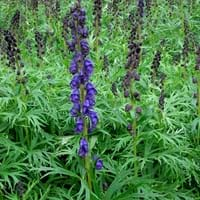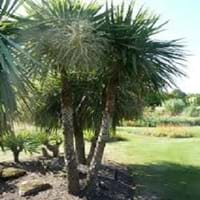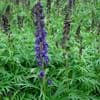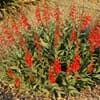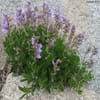Life Span
Perennial
Perennial
Type
Flowering Plants, Perennial
Broadleaf Evergreen
Origin
Not Available
New Zealand
Types
Yellow Monkshood, Carmichael's Monkshood, Kamchatka Aconite
Not Available
Habitat
low mountains
Coastal Regions
USDA Hardiness Zone
4-8
8-11
AHS Heat Zone
Not Available
Not Available
Sunset Zone
Not Available
21,22
Habit
Upright/Erect
Upright/Erect
Flower Color
Blue, Violet
White
Flower Color Modifier
Not Available
Bicolor
Fruit Color
Not Available
White, Blue
Leaf Color in Spring
Green
Burgundy, Dark Red, Copper
Leaf Color in Summer
Green
Burgundy, Dark Red, Copper
Leaf Color in Fall
Green
Burgundy, Dark Red, Copper
Leaf Color in Winter
Green
Burgundy, Dark Red, Copper
Leaf Shape
Upright
Long Narrow
Plant Season
Fall, Summer
Spring, Summer, Fall, Winter
Sunlight
Full Sun, Partial shade
Full Sun, Partial Sun, Partial shade
Type of Soil
Moist
Loam, Sand
The pH of Soil
Not Available
Neutral, Alkaline
Soil Drainage
Well drained
Well drained
Bloom Time
Early Fall, Late Summer
Late Spring, Early Summer, Summer
Tolerances
Not Available
Drought, Salt
Where to Plant?
Ground
Ground
How to Plant?
Divison
Stem Planting, Transplanting
Plant Maintenance
Medium
Medium
Watering Requirements
Do Not over Water, Requires regular watering
Average Water Needs
In Summer
Lots of watering
Lots of watering
In Spring
Moderate
Moderate
In Winter
Average Water
Average Water
Soil pH
Neutral
Neutral, Alkaline
Soil Type
Average, Moist
Loam, Sand
Soil Drainage Capacity
Well drained
Well drained
Sun Exposure
Partial Sun
Full Sun, Partial Sun, Partial shade
Pruning
Remove damaged leaves
Prune if you want to improve plant shape, Remove damaged leaves, Remove dead leaves
Fertilizers
All-Purpose Liquid Fertilizer
All-Purpose Liquid Fertilizer
Pests and Diseases
Citrus leaf miner, Leaf spot, Mealy bugs, Mites, Rust, Verticillium Wilt
Red blotch
Plant Tolerance
Drought
Drought
Flowers
Yes
Insignificant
Flower Petal Number
Not Available
Single
Foliage Texture
Bold
Coarse
Foliage Sheen
Matte
Not Available
Attracts
Bees
Caterpillar, Moths
Allergy
breathing problems, Nausea, Rapid Heartbeat, Sweating, Vomiting, weakness
Asthma
Aesthetic Uses
Showy Purposes
Beautification, Landscape Designing, Showy Purposes
Beauty Benefits
Not Available
Not Available
Environmental Uses
Not Available
Air purification
Medicinal Uses
Gout, Heart problems, Inflammation, Joint pain, Kidney problems, Nerve pain, Wounds
Diabetes, Dysentry, Stomach pain
Part of Plant Used
Whole plant
Leaves, Root, Stem
Other Uses
Used in herbal medicines
Decoration Purposes, Employed in herbal medicine, Showy Purposes, Used As Food, Used as Ornamental plant
Used As Indoor Plant
No
No
Used As Outdoor Plant
Yes
Yes
Garden Design
Cutflower, Mixed Border
Container, Feature Plant, Foundation, Houseplant, Screening, Wind Break, Tropical
Botanical Name
Aconitum variegatum
CORDYLINE australis 'Red Star'
Common Name
Aconite, Monkshood, Wolf's bane, Leopard's bane, Mousebane, Women's bane, Devil's helmet, Queen of all Poisons, or Blue rocket
Cabbage Palm
In Hindi
बच्छनाभ
गोभी पेड़
In German
Eisenhut
Cabbage tree
In French
aconit
arbre de chou
In Spanish
acónito
árbol de la col
In Greek
monkshood
λάχανο δέντρο
In Portuguese
Aconitum
repolho árvore
In Polish
tojad
kapusta drzewo
In Latin
aconitum
brassica ligno
Phylum
Magnoliophyta
Magnoliophyta
Class
Magnoliopsida
Liliopsida
Order
Ranunculales
Asparagales
Family
Ranunculaceae
Asparagaceae
Clade
Angiosperms, Eudicots
Angiosperms, Monocots
Tribe
Delphinieae
Not Available
Subfamily
Not Available
Lomandroideae
Importance of Aconitum and Cabbage Tree
Want to have the most appropriate plant for your garden? You might want to know the importance of Aconitum and Cabbage Tree. Basically, these two plants vary in many aspects. Compare Aconitum and Cabbage Tree as they differ in many characteristics such as their life, care, benefits, facts, etc. Every gardener must at least have the slightest clue about the plants he wants to plant in his garden. Compare their benefits, which differ in many ways like facts and uses. The medicinal use of Aconitum is Gout, Heart problems, Inflammation, Joint pain, Kidney problems, Nerve pain and Wounds whereas of Cabbage Tree is Diabetes, Dysentry and Stomach pain. Aconitum has beauty benefits as follows: Not Available while Cabbage Tree has beauty benefits as follows: Not Available.
Compare Facts of Aconitum vs Cabbage Tree
How to choose the best garden plant for your garden depending upon its facts? Here garden plant comparison will help you to solve this query. Compare the facts of Aconitum vs Cabbage Tree and know which one to choose. As garden plants have benefits and other uses, allergy is also a major drawback of plants for some people. Allergic reactions of Aconitum are breathing problems, Nausea, Rapid Heartbeat, Sweating, Vomiting and weakness whereas of Cabbage Tree have Asthma respectively. Having a fruit bearing plant in your garden can be a plus point of your garden. Aconitum has no showy fruits and Cabbage Tree has showy fruits. Also Aconitum is flowering and Cabbage Tree is not flowering . You can compare Aconitum and Cabbage Tree facts and facts of other plants too.
